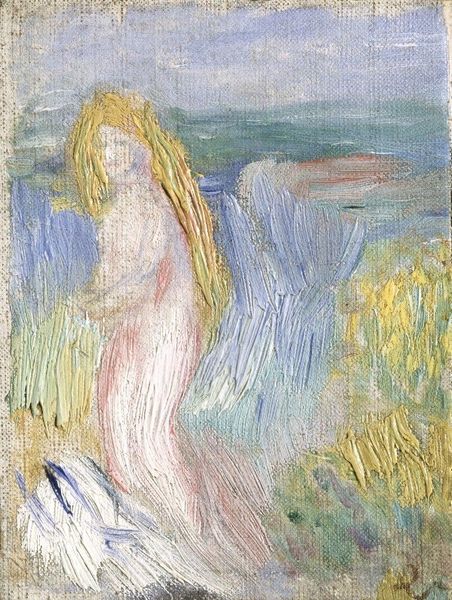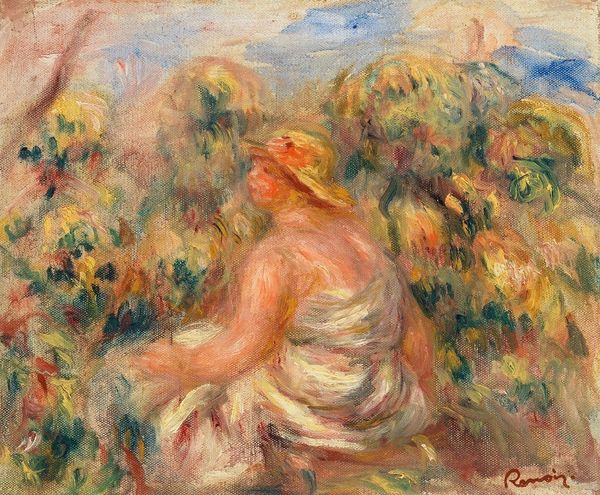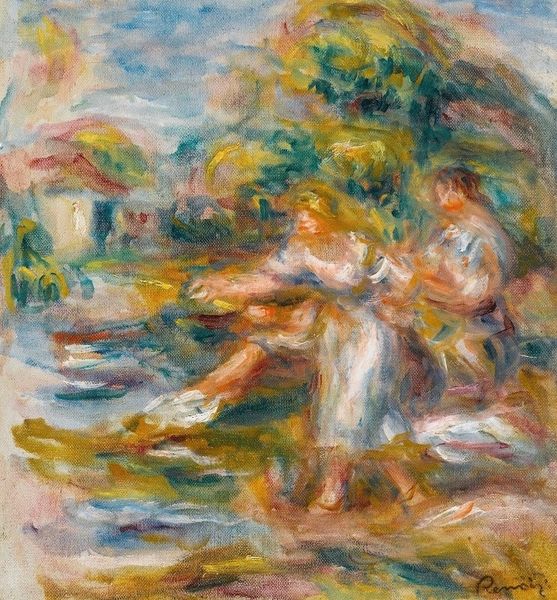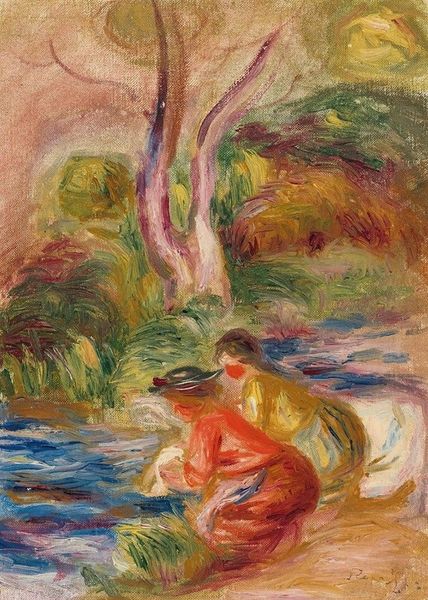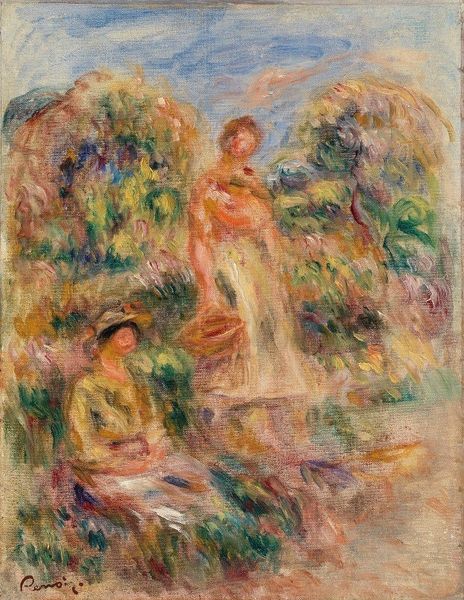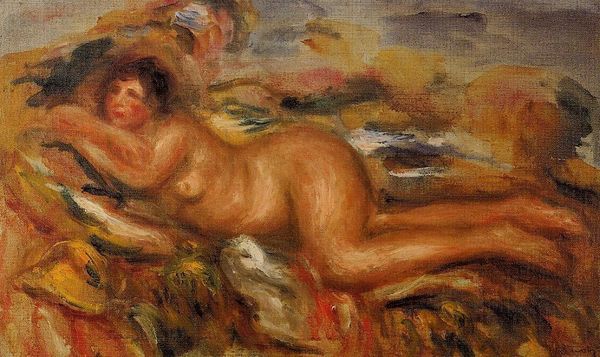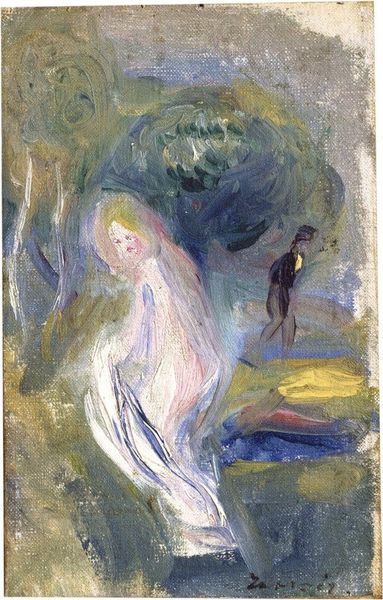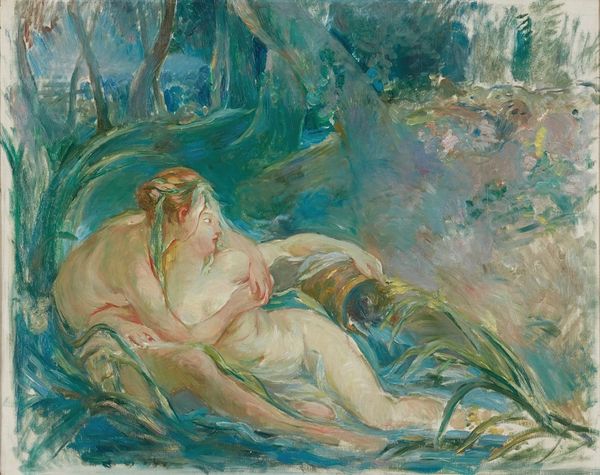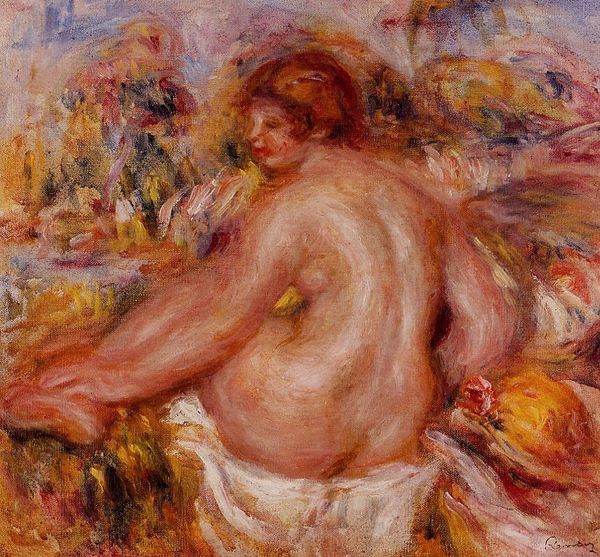
Copyright: Public Domain: Artvee
Curator: Take a look at this intriguing work by Pierre-Auguste Renoir, created around 1907, titled "Femme Nue Et Paysage," which translates to "Nude Woman and Landscape." Editor: It's instantly dreamlike. The hazy edges and soft colors... the nude almost blends into the landscape as if she’s emerging from it or dissolving into it. Curator: Absolutely. It exemplifies Renoir’s late style, where the distinction between figure and background blurs, focusing more on color and light. You see that distinctive brushwork too; how he builds form with short, soft strokes. Editor: It’s definitely of its time. While I can appreciate the impressionistic technique, the subject matter does feel... loaded. There’s this casual juxtaposition of the female body with the landscape that evokes a sense of possession, a tradition within art history. It's pretty common but always worth noting. Curator: True, but consider Renoir’s personal context. He was known for his idealization of the female form, seeing women as symbols of fertility and beauty, tying into his overall celebratory approach to life through art. The "plein-air" nature, painted outdoors, speaks to the time period as well, of leaving stuffy closed environments. Editor: That idealization itself is a product of a patriarchal gaze. Representing women as timeless, passive muses rather than active agents reinforces a problematic dynamic. This is made even more apparent because of his landscape treatment. Renoir’s technique might veil the deeper structures present but doesn't make them unexistent. Curator: I think we also need to remember that Impressionism often rejected the formal constraints of the Academy in favor of capturing fleeting moments and subjective impressions of beauty. Editor: Which doesn’t negate that the way one experiences beauty depends heavily on socio-historical location. Curator: Perhaps. But overall, there's a powerful sensuality present in "Femme Nue Et Paysage," which ultimately invites us to reflect on beauty in many different ways, and understand what Renoir meant for his moment. Editor: Indeed, seeing this painting with critical eyes, acknowledging the layered, complex interplay between the artwork itself, society and the artists intention certainly generates great insights.
Comments
No comments
Be the first to comment and join the conversation on the ultimate creative platform.
